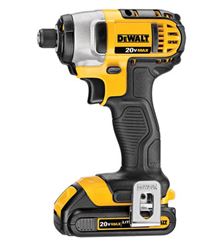As you walk around looking at different models, specifications and prices the feeling of complete confusion over powers your normally rational thoughts. Manufacturers love to bamboozle us with various brands, special features, high speed, torque ratings, capacities and new cordless batteries.
Some questions you need to ask yourself;
- Will you be drilling into just wood or do you need to go through concrete or even steel?
- Will you be just driving screws into soft woods or large construction screws into hard woods?
Cordless Drill power is measured in battery voltage. Higher voltage means more torque-spinning strength to overcome resistance. Over the last decade, top-end voltage has increased from 9.6 to 18V, but the range of models still include 6, 7.2, 9.6, 12, 14.4 and 18V, like the Festool 18v Cordless drill. Today's higher-voltage drills have enough power to bore big holes in framing lumber and flooring. That's impressive muscle. But the trade-off for power is weight
Cordless drills are typically split into 3 categories:
- Combi Drive
- Drill Driver
- Impact Driver
You may ask ‘So what us the difference between these drills?'
|
|
Combi Drills Drills have 3 functions the ability to
Normally a combi drill will offer at least two, but sometimes three, speeds:
Hammer functionality on a combi drill adds "blows" to your drilling which allows you to drill into masonary. Please note the construction of the combi drill. As you'll be using it for more robust applications, you'll want to choose a combi drill that's very well made, with a metal chuck or metal gear box. |
|
|
Drill Drivers Drill drivers typically offer you two functions; the ability to
Often they'll be equipped with two speeds and multiple torque settings, although the torque won't be as high as that found on either a combi drill or an impact driver. When choosing a drill driver, take note of the capacity of holes it will allow you to drill and also the top torque setting as this will affect the sort of materials you can effectively drill screws into. Pay attention, too, to the battery supplied with the machine; the higher rated the Ah of the battery the longer the drill driver will run between charges. And the less charges you subject your battery to, the longer it'll last. |
|
|
Impact Driver An impact driver will be fitted with a hex chuck (or similar). This is a quick-release style mechanism that differs from the chucks found on combi and drill drivers. A hex chuck take hex screwdriver bits as an impact driver is essentially designed to drive screws into tough work pieces. However, with the correct bit fitted, you can also undertake some drilling applications. Impact drivers are all about hi-torque, coupled with high levels of impact. A typical impact driver will output higher levels of torque than even the top-of-the-range combi drill. Again, when choosing your impact driver, take note of the battery fitted and over all construction of the power tool. |





Leave a comment